by Ido Nahari
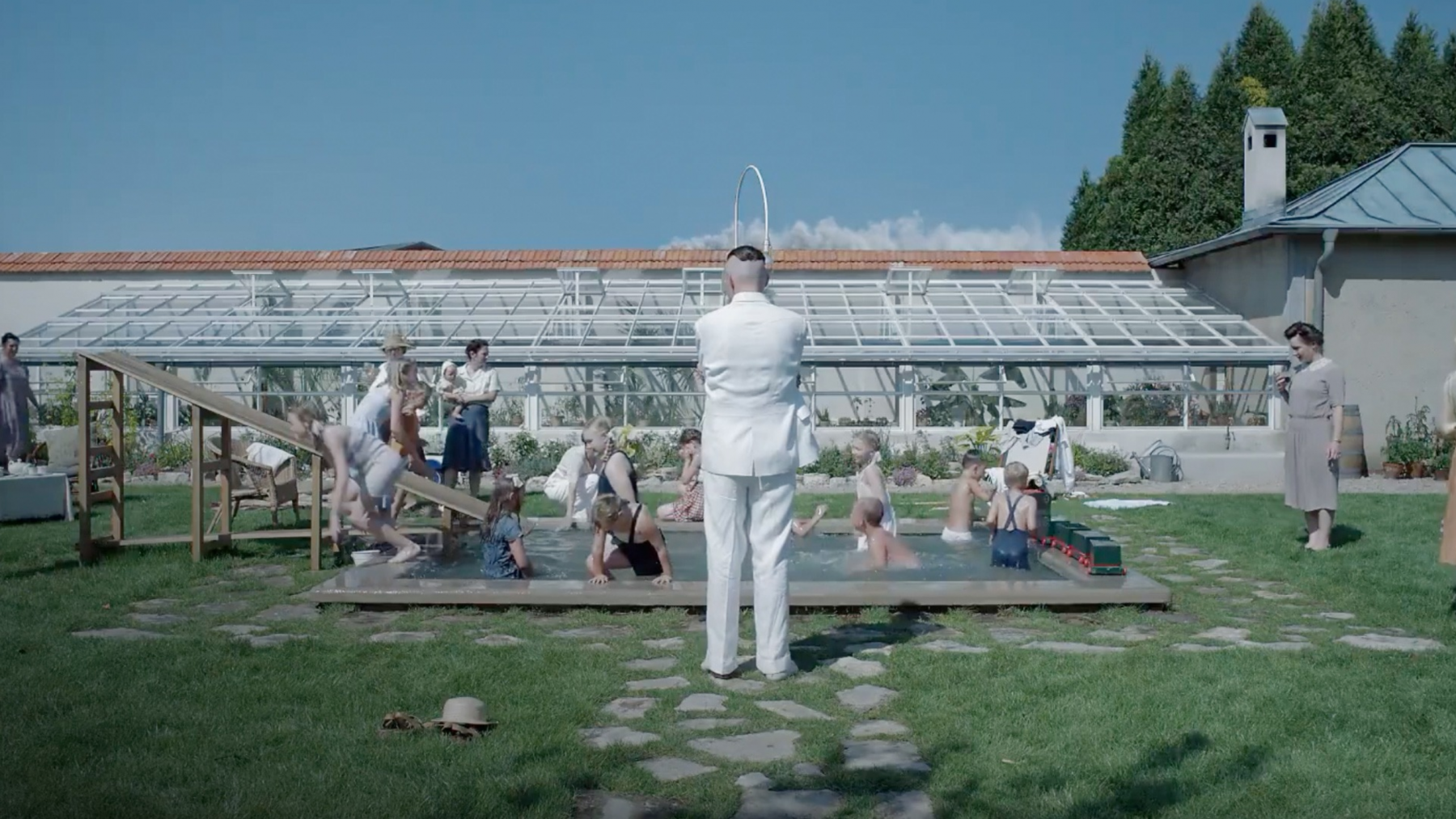
Jonathan Glazer, The Zone of Interest, 2023, film still.
Rudolf Höss is leaving home. He notifies his wife Hedwig and their children that work
necessitates him to be elsewhere. Birthdays will be missed. Maybe anniversaries, too. His children are sullen, but his beloved is enraged. This is our home, she berated him during a heated exchange beforehand. With lake retreats and vines covering their garden walls, she insists that here, in this domestic pastoral they built for themselves, their children are strong and healthy and happy. Leaving all this behind? We’re living here how we dreamed we would, she presses him. Beyond how we dreamed. Abandoning all of that would be nonsensical. Their spacious villa realises them as homesteaders with a living space – Lilac trees grow beside their rows of flowerbeds. Looking at him with aggressive defiance, the self-proclaimed queen of Auschwitz refuses to abdicate her throne, until she breaks down and outbursts. They’d have to drag me out of here.
This sentence, “the idea that someone would be happy in Auschwitz, the idea that someone wouldn’t want to leave Auschwitz”, was how director Jonathan Glazer described what he saw as the cornerstone of his film, The Zone of Interest (2023). The idea that the home life of the woman who married the Schutzstaffel Kommandant of Auschwitz, that “her bliss, her garden, her house, was just too wonderful to give up”, crowns for Glazer a level of “disassociation [that] was so extraordinary.” [1] The movie depicts the maintenance of a quotidian life within the Höss household; pool parties and gardening routines that neighbour a death camp. For Glazer, it was imperative to take a cinematic distance from the film set itself. As he put it, he wanted the film to be watched as a sort of “Big Brother in a Nazi house”, to feel as canny as possible. Achieving this goal meant installing cameras throughout the built movie set, keeping them running without a single crew member on site. [2] “When the actors went onto set”, Glazer mentioned, “there was no evidence that they were on a set.” For all intents and purposes, they too were home.
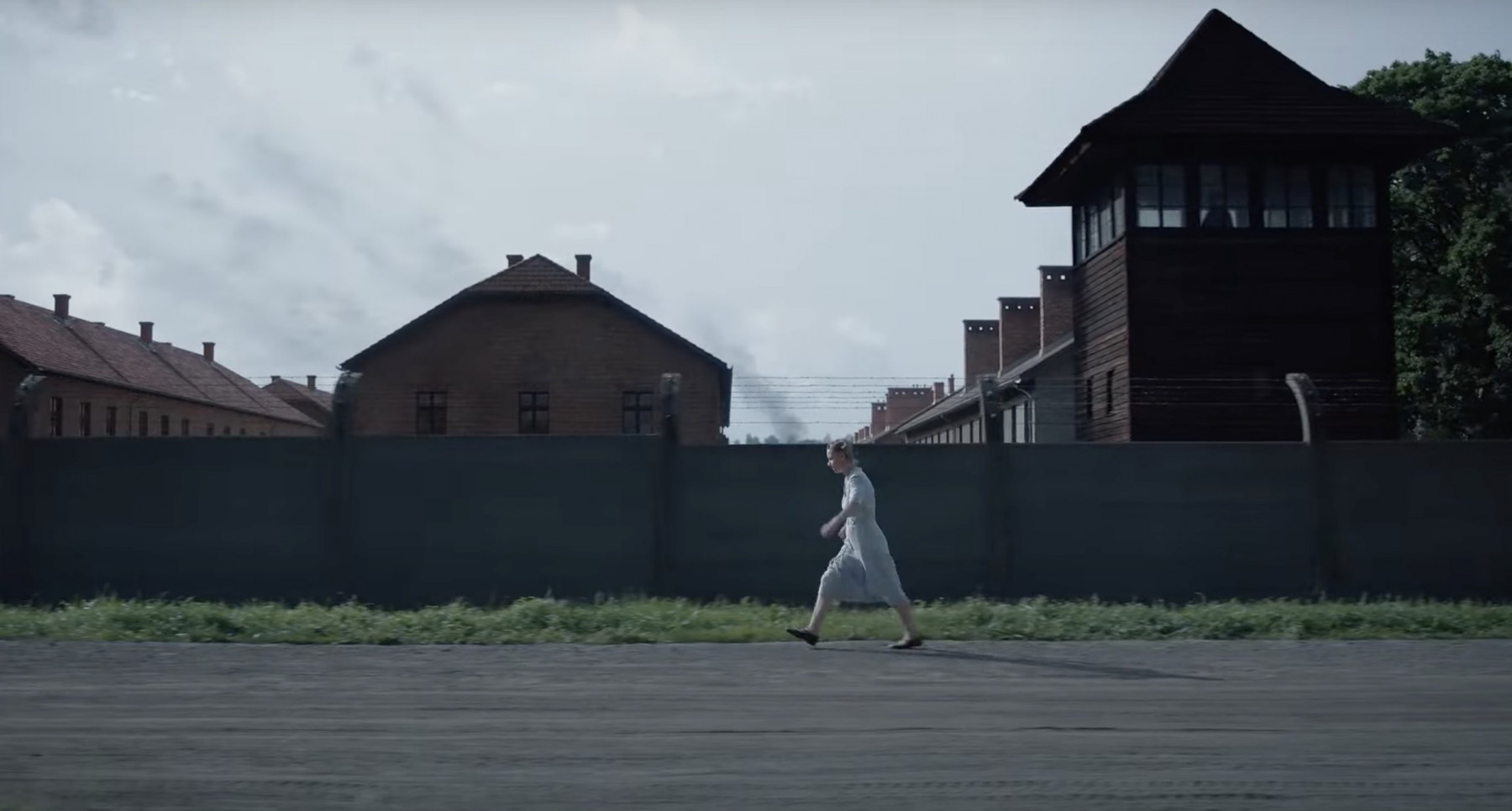
Jonathan Glazer, The Zone of Interest, 2023, film still.
Towering shadows of Auschwitz Birkenau serve as contours throughout the film. Merely a backdrop of guard towers and glow in the dark chimneys. No atrocities or victims are shown to us. But it is still all there – we hear it in the distance. Guard dogs bark; soldiers command; shots are fired over there. This jarring disconnect between what is shown and what is heard is the crack between the presented film and what Glazer called “the other film" which, he argues, is essentially “the film”. [3]
But instead of watching the film, audiences witness a hospitable existence inside a pleasant house. What is supposedly shown to us is the comfortable and the congenial. We dine and unwind next to the slaughterhouses. This welcoming environment could be said to be heimlich. Writing two decades prior to the German invasion to Poland, psychoanalyst Sigmund Freud proposed that the German word heimlich is to the house all that is “familiar, tame, intimate”. Heimlich arouses “a sense of peaceful pleasure and security as in one within the four walls of [a] home.” Naturally, the heimlich could be applied to individuals too. Consider Hedwig Höss, who fits his psychoanalytic description of someone who “could not readily find another spot so intimate and heimlich” as Auschwitz. For Freud, Hedwig Höss would be “a careful housewife, who knows how to make a pleasing Heimlichkeit out of the smallest means.”
Heimlich derives from the German for home, Heim. While it might present itself as a net positive, the term connotes bubbling deceit. Freud reminds us that to do something heimlich is to “act behind someone’s back”, to plant flowers on the other side of barbed wire, to prepare feasts while others starve, or simply “to look on with heimlich pleasure at someone’s discomfiture”. Looking at the Höss household, we are luminated with their blinding confidence. We are all witnessing hubris of mythical proportions. A blind outlook that was described by Hedwig’s mother Linna as landing on one’s feet. This, too, is heimlich. Brothers Grimm denote the uncomfortable term as a feeling of being “free from fear”, as well as an ominous sensation of “that which is obscure, inaccessible to knowledge” – knowing that something is out of place; be it a pleasant afternoon set aside human smoke, a death march set inside a splendid green field with birds and horses, or a nourishing dinner not too far from where others starve. Like most German words, heim serves as a building block for other similar terms. Heimweh means homesickness. Heimtückisch tellingly enough translates as insidious. Heimat construes the homeland and, most crucial of all, Geheim – meaning both a former home and a secret – which is precisely how Glazer presents the mundane life of the Höss. All such denominations of heim blend into the revulsion most feel when inspecting the animated household Glazer has masterfully constructed in The Zone of Interest. But how does that work? What is the psychological process that renders comfort as uncomfortable? Quiet into disquiet?
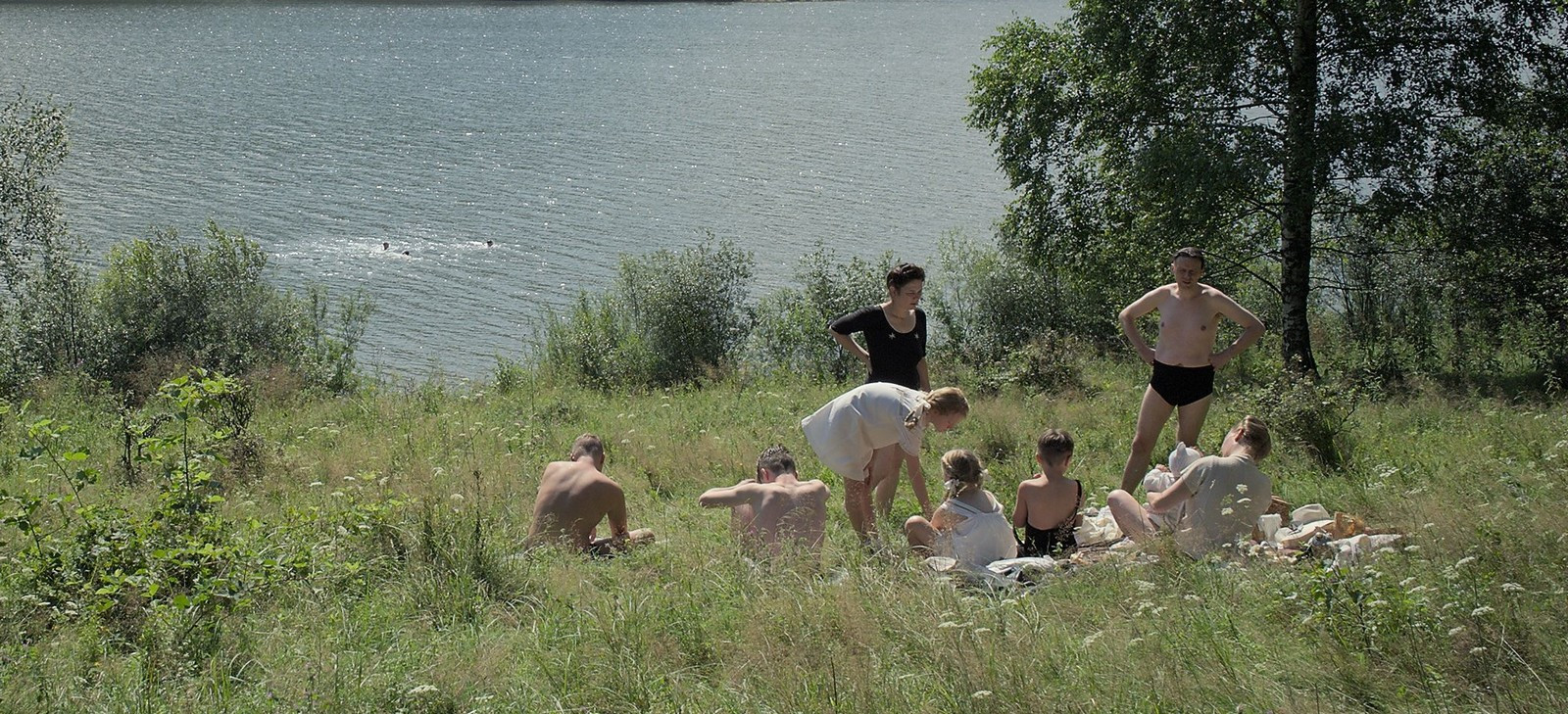
Jonathan Glazer, The Zone of Interest, 2023, film still.
Freud argues that the two opposite categories are, in fact, one and the same. “What interests us most”, he writes, is that the word heimlich exhibits shades of meaning which are “identical with its opposite, unheimlich”. [4] Collapsing garden walls and semantic barriers would reveal that “what is heimlich thus comes to be unheimlich”. Commonly translated as uncanny, Freud allocates the unheimlich “to all that is terrible – to all that arouses dread and creeping horror”. What literally means unhomely applies to the disquieting life led by Hedwig and Rudolf Höss that are played in the film with genius by Sandra Hüller and Christian Friedel respectively. But the unheimlich applies just as well to the barracks that remain a passive background in what comes across as the bravest cinematographic choice in recent filmmaking. Present and absent, the unheimlich for Freud is that which petrifies us precisely because it “leads back to something long known to us, once very familiar” but now somewhat forgotten. Yes, the lack of grounded self-assurance embedded in the unheimlich generates “uneasy, eerie, bloodcurdling” feelings. But it is also more than that. Philosopher Friedrich Wilhelm Joseph Schelling defines the unheimlich as the name for all places, affairs and conditions “that ought to have remained…hidden and secret” but have “become visible”. In that sense, we could suggest the following hyperbole that showcases just how Glazer operates in a masterful manner. Both Villa Höss and Auschwitz appear to us as unheimlich – both sites are the open secret and the hidden truth, “un-secrets”, as Schelling would call them, which belong to the categories of “that which should have remained hidden but has somehow failed to do so.” Little surprise then that the German expression “an unheimliches house” – like the Höss villa – also connotes “a haunted house”. Since the foreground and the background are withheld from one another, “concealed, kept from sight” and remain removed from the reach of others, The Zone of Interest visualizes the binary collapse between heimlich and unheimlich that Freud discussed. Auschwitz is not brought forth to us in the film, and the Höss household is just as hidden from its next door victims. But since the Höss do not have an abode, but a fortress, the notion of unhomeliness operates in the film on several levels. The unheimlich is not novel or unfamiliar, but rather “familiar and old – established in the mind that has been estranged only by the process of repression,” in Schelling’s words. In that sense, it would not come as a surprise that genocides unfolding around the corner do not stifle appetites. Burning corpses do not stop one from tanning outside. Faint shrieks accommodate laughter, and the list goes on and on and on.
Paused in limbo, psychiatrist Ernst Jentsch supposed that the unheimlich stirs “doubts whether an apparently animate being is really alive; or conversely, whether a lifeless object might not be in fact animate”. Choo-choo trains filled with soon-to-be-carcasses mirror the delightful wooden trains the Höss children play around with. Likewise, toy soldiers emulate the next door butchers. The fact that simulacrums are needed in order to muffle the miseries of reality is no mere theoretical concern. Victims are often regarded as helpless, passive things. Perpetrators – despite their violent and thus active deeds – are far too often read as husks of a shed humanity. Taking their time to meditate with cigarette breaks or bask in the sun, just as Rudolf and Hedwig Höss do in the film. “In telling a story,” Freud continues, “one of the most successful devices for easily creating uncanny effects” is to leave audiences in a state of uncertainty “whether a particular figure in the story is a human being” or not. Witnessing what unfolds on screen makes moviegoers identify with both perpetrator and victim. Doing it well means leaving the chasm unresolved – continuously questioning our own rapport with butchers. Glazer must have had something like that in mind. Otherwise, he would not have approached Friedel and told him that the secret to create Höss and dive into his darkness is “if you speak the truth, then lie with your eyes. And if your eyes tell the truth, then lie with your mouth.”[5]
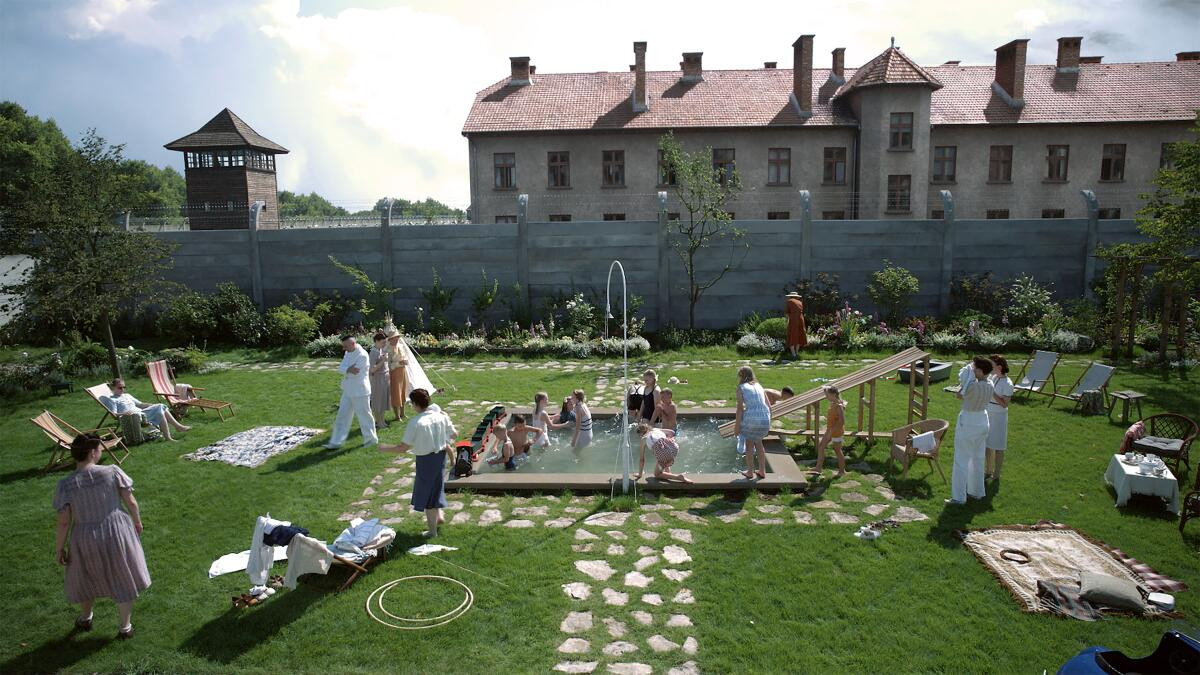
Jonathan Glazer, The Zone of Interest, 2023, film still.
Were Freudian psychoanalysis to offer a theoretical framework to genocide and even postcolonial studies, it would be a sociological and historical reading of the unheimlich and its reversal. Inspecting tamed environments that provoke a recoil, examining all pioneers who make homes atop torn limbs and rubble, lavish estates close enough to cotton fields, or settlements erected from human debris. The Zone of Interest steers the unheimlich as a never-fully-acknowledged-terror, while acknowledging the obliviousness demanded in all homemakings. In short, we are presented with those who negate a negation. People are described as uncanny “when we ascribe evil motives” to them. But Freud determines that there is also more to it than that. We must do more than just credit them “with bad intentions, but must attribute to these intentions [a] capacity to achieve their aim in virtue of certain special powers” – perhaps in the form of a full backing from a state apparatus, a lubricated war machine, or organized colonial intent.
◯
Glazer dedicates the final moments of the film to a telephone exchange between Hedwig, who remained in Auschwitz with the children, and Rudolf, who announces his return from Berlin. Have you told them Daddy’s coming home? He asks with proud excitement. Yes. She responds. Goodnight. The line disconnects. Leaving his office late at night, he locks the door behind him and begins his descent down the staircase. Walking down long corridors, he suddenly begins to slow down. Clutching the handrails, he throws up on the floor tiles. After a few spits, he calmly continues downstairs. But then, for some reason, Höss is possessed. He stares into the infinite vacuum of the building passages in an absolute muted moment. He is all alone. Freud once again probes us into asking where does “the uncanny influences of silence, darkness and solitude” come from – stylistic elements that are quintessential to all zones of interest? Let us not forget that all those who experience an unheimlich feeling in the highest degree feel so “in relation to death and dead bodies, to the return of the dead, and to spirits and ghosts”. Is that what Höss witnesses in the black abyss he stares into? Does he feel unheimlich towards himself in a rare moment of superego recognition? From the darkness of the screen, his atrocities come to light: a white dot is shown, and the clank sounds of a door unlocking. Then – it all becomes clearer. We see Polish women. Cleaners in the actual Auschwitz-Birkenau Museum who scrub the ovens, brush the gas chambers, and wash heaps of suitcases, shoes and prosthetics left behind. In those surprising scenes of present-day we experience the highest degree of the Freudian uncanny. The moment “when inanimate objects–a picture–come to life”.
We then cut back to Höss. He is right where we left him, stunned by the void staring back at him. Maybe, like Walter Benjamin once wrote On the Concept of History (1940), “where we see the appearance of a chain of events, he sees one single catastrophe, which unceasingly piles rubble on top of rubble and hurls it before his feet.” [6] Maybe, in Benjamin’s words, “that which we call progress, is this storm”. And maybe, a homecomer such as Rudolf Höss can be no other than our own angel of history.
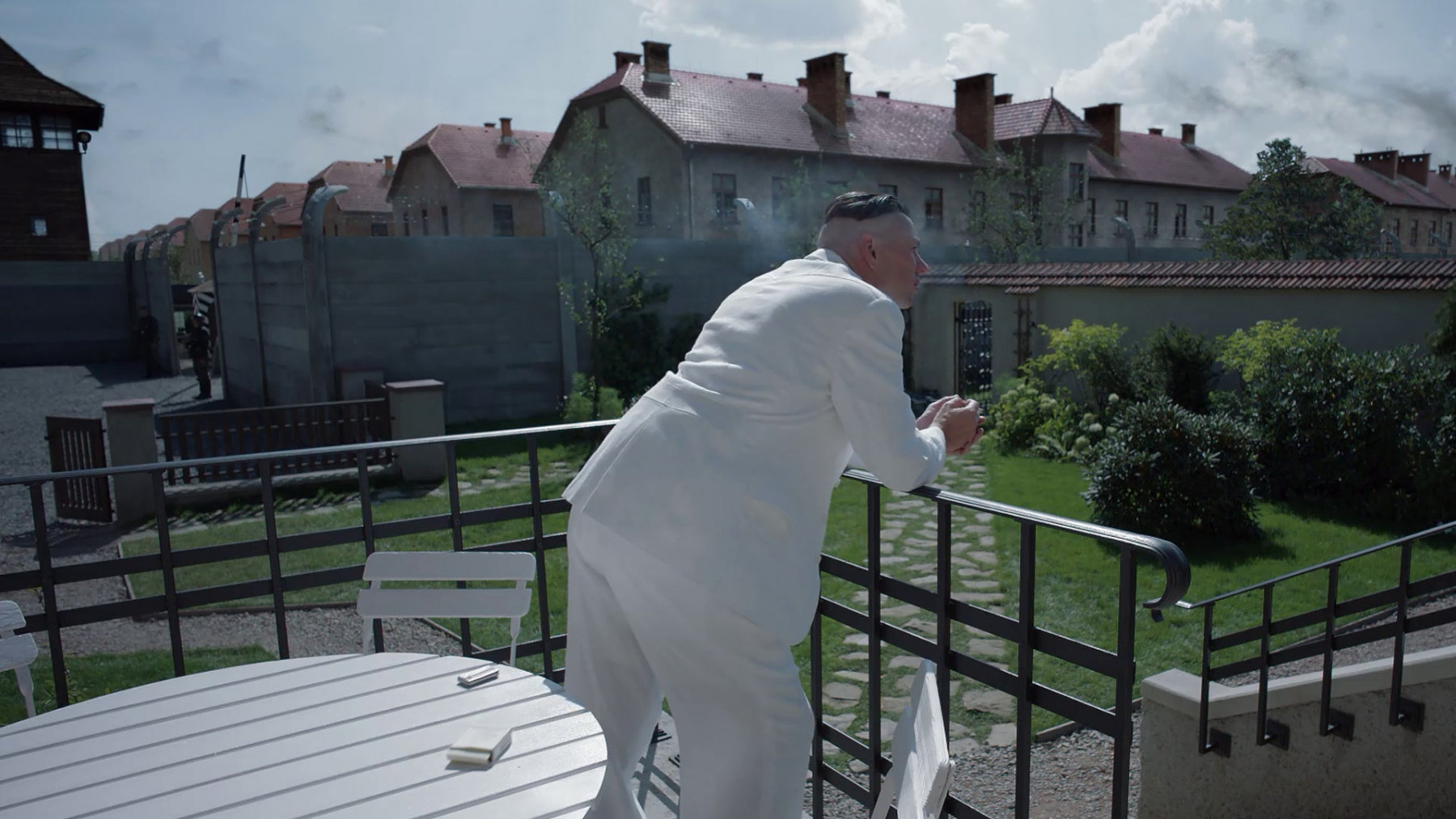
Jonathan Glazer, The Zone of Interest, 2023, film still.
[1] Mark Salisbury, ‘Jonathan Glazer on The Zone of Interest’: “I wanted to remove the artifice of filmmaking”’, Screendaily, 27 November 2023.
[2] Sam Adams, ‘Why The Zone of Interest is filmed like “Big Brother in a Nazi house”’, Slate, 15 December 2023.
[3] Salisbury, ‘Jonathan Glazer on The Zone of Interest’.
[4] Sigmund Freud, The Uncanny, 1919
[5] Christian Zilko, ‘The Zone of Interest featurette: Jonathan Glazer and Sandra Hüller on finding the truth between all the Hoss family’s lies’, IndieWire, 26 February 2024.
[6] Walter Benjamin, On the Concept of History, IX, 1940.
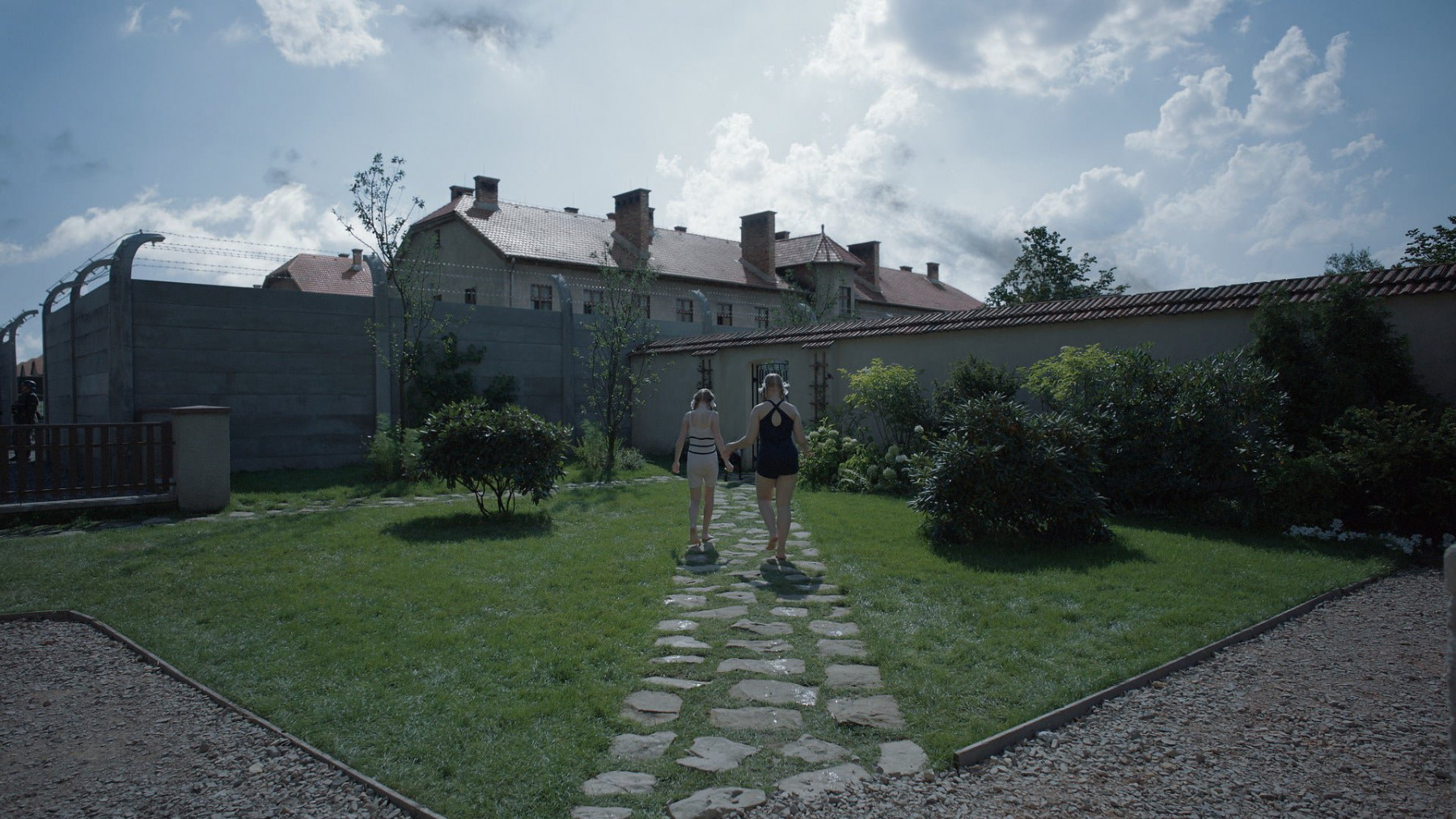
Jonathan Glazer, The Zone of Interest, 2023, film still.
THE ZONE OF INTEREST screened at the Cannes film festival and was released
on 15 December 2023 in German cinemas.